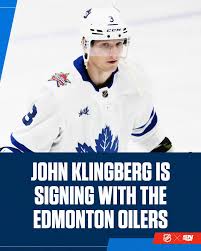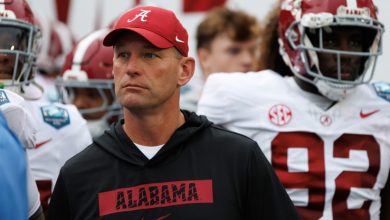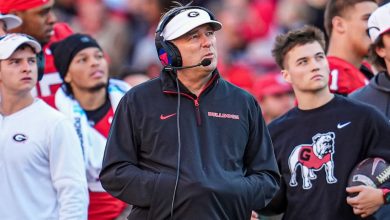What should the Edmonton Oilers expect from new defenceman John Klingberg?

The Edmonton Oilers have long been defined by their dynamic offensive firepower, with stars like Connor McDavid and Leon Draisaitl leading the charge. However, a team with such explosive offensive talent has often found itself vulnerable in its own zone. Despite a few key acquisitions over the years, the Oilers’ defensive corps has frequently been a source of concern. With this in mind, the addition of veteran defenceman John Klingberg presents an intriguing opportunity for the Oilers to shore up their blue line. But what should Edmonton realistically expect from Klingberg as he joins the team, and how can he make an impact in the Oilers’ quest for a championship?
The Profile of John Klingberg
John Klingberg, a Swedish defenceman who has been in the NHL since the 2014-15 season, comes to Edmonton after several seasons with the Dallas Stars and a brief stint with the Anaheim Ducks. Known for his offensive abilities, exceptional skating, and sharp hockey IQ, Klingberg has been one of the league’s more dynamic offensive-minded defencemen. Over his career, he has accumulated over 300 points, making him one of the top scoring defencemen of his generation.
What makes Klingberg particularly valuable is his ability to contribute offensively while also playing in a more traditional defensive role. He is not a physical bruiser but rather a player who uses his skating, positioning, and intelligence to control the puck and prevent scoring chances. This dual-threat style of play is part of what makes him an intriguing fit for the Oilers, who have long sought to improve their blue line while maintaining their offensive potency.
Klingberg’s Strengths: Offensive Impact and Power Play Prowess
One of the most immediate areas where the Oilers can expect to see Klingberg’s influence is on their power play. Throughout his career, Klingberg has been known as an excellent power-play quarterback. His vision and passing ability make him a key distributor on the man advantage, and his shot from the point is both accurate and quick. With the Oilers already possessing one of the league’s most lethal power plays, Klingberg’s addition could make them even more dangerous.
In his prime years with the Dallas Stars, Klingberg was a key piece of their power-play unit, often orchestrating plays from the blue line and creating opportunities for his teammates. His ability to handle the puck under pressure and quickly move it up the ice is an asset that can elevate the Oilers’ already impressive power play.
With McDavid and Draisaitl often drawing attention on the man advantage, Klingberg’s ability to move the puck and generate shots will allow the Oilers to have another weapon to attack the opposition’s penalty kill. His versatility as a passer and shooter makes him a versatile option on the blue line, and his hockey sense allows him to read the game and exploit openings in the defense. Whether it’s dishing a cross-ice pass to a one-timing Draisaitl or quickly moving the puck back to the point for a McDavid slap pass, Klingberg’s skills will complement the Oilers’ offensive game.
Moreover, Klingberg’s ability to push the pace in transition could help the Oilers generate offense even when they’re not on the power play. His vision and decision-making allow him to make quick, accurate passes that lead to odd-man rushes or quick zone entries. This aligns with the Oilers’ speed-based style of play, which thrives on offensive rushes and fast transitions.
Defensive Responsibilities: What Will He Bring?
While Klingberg is primarily known for his offensive contributions, his defensive game has improved significantly over the years. That said, he’s not a shutdown defender in the traditional sense, and fans in Edmonton should temper their expectations in this regard. Klingberg is far more comfortable in a puck-moving role than in a bruising, physical shutdown role, and his defensive game is more about positioning, skating, and intelligence than physicality.
Klingberg’s style is often characterized by his ability to disrupt the opposition’s plays with smart positioning and quick stick checks. He’s not afraid to use his agility to contain opponents or to make defensive reads that allow him to create turnovers. His transition game is key to his defensive value—his ability to quickly move the puck out of the zone is something the Oilers have needed for years.
However, it is important to note that Klingberg has occasionally been criticized for his defensive lapses, especially in high-pressure situations. He can sometimes struggle with coverage in front of the net or make questionable decisions when it comes to pinching at the blue line. While these tendencies might not be glaring weaknesses, they are areas where the Oilers will need to provide support and cover for him. With Edmonton’s defensive depth still a question mark, Klingberg will need to balance his offensive responsibilities with being reliable in his own zone.
One potential area where Klingberg could make a difference is in his ability to support and pair with strong defensive players. When paired with a more defensively responsible partner, Klingberg’s ability to push the pace and generate offense can be maximized, while his partner can cover for his occasional lapses.
Special Teams Impact: Penalty Kill and 5-on-5 Play
Klingberg’s strength on the power play is well-documented, but his impact on the penalty kill and at 5-on-5 will be a key area of focus. While Klingberg isn’t known for being a penalty killer, his intelligence and skating could make him a more effective defender in this role than many might initially assume.
Given the Oilers’ need for more depth in penalty killing, Klingberg may be called upon to log some ice time shorthanded. He’s a strong skater who can break up passing lanes and force turnovers, and his quick stick can help disrupt the opposition’s attempts to set up in the Oilers’ zone. However, this remains a potential area of concern, as Klingberg’s defensive play in tight spaces and in front of his own net has been criticized at times.
At 5-on-5, Klingberg’s overall defensive effectiveness can vary depending on matchups. He’s not a player who will dominate physically in battles along the boards or in front of the net, but his ability to read the game and move the puck quickly should give the Oilers more speed in transitioning from defense to offense. If paired with a strong defensive partner who can cover for him in key moments, Klingberg’s ability to transition and join the rush will make him a valuable contributor at even strength.
The Oilers’ Defensive Pairings: How Klingberg Fits In
The Oilers’ defensive corps is a blend of youth and experience, but Klingberg’s presence could help solidify their blue line as they aim for a deep playoff run. One potential pairing could see Klingberg paired with a more defensively focused partner, such as Mattias Ekholm. Ekholm, known for his strong defensive play and physicality, would complement Klingberg’s offensive flair and smooth skating. This could allow Klingberg the freedom to push the pace offensively while Ekholm handles the heavy lifting in his own end.
Alternatively, Klingberg could find himself paired with Evan Bouchard, who has shown promise as a budding offensive defenceman. Bouchard’s ability to move the puck could be well-matched with Klingberg’s vision, creating a potent pairing capable of driving offense while still maintaining responsible defensive play. This pairing could help create a balanced blue line unit for Edmonton, where one pairing focuses more on transition and offense while the other takes a more defensive-minded approach.
What Can Oilers Fans Expect from Klingberg?
In summary, Oilers fans should expect a solid but imperfect addition in John Klingberg. He brings an array of skills that can elevate the team’s power play, increase offensive production from the back end, and contribute to the transition game. However, his defensive play may have some shortcomings, particularly in situations requiring physicality or in tight coverage.
Klingberg will be expected to fit into the Oilers’ high-octane, fast-paced game, contributing both on the power play and at even strength. His offensive ability will be a boon for a team that thrives on generating chances, but his defensive play will require support from his teammates, especially in high-pressure situations.
Ultimately, Klingberg’s effectiveness will depend on how well he integrates into the Oilers’ system and how the coaching staff leverages his strengths while mitigating his weaknesses. If he can develop chemistry with his defensive partner and focus on the areas of his game that have improved over time, he has the potential to make a significant impact in Edmonton’s pursuit of a Stanley Cup.









